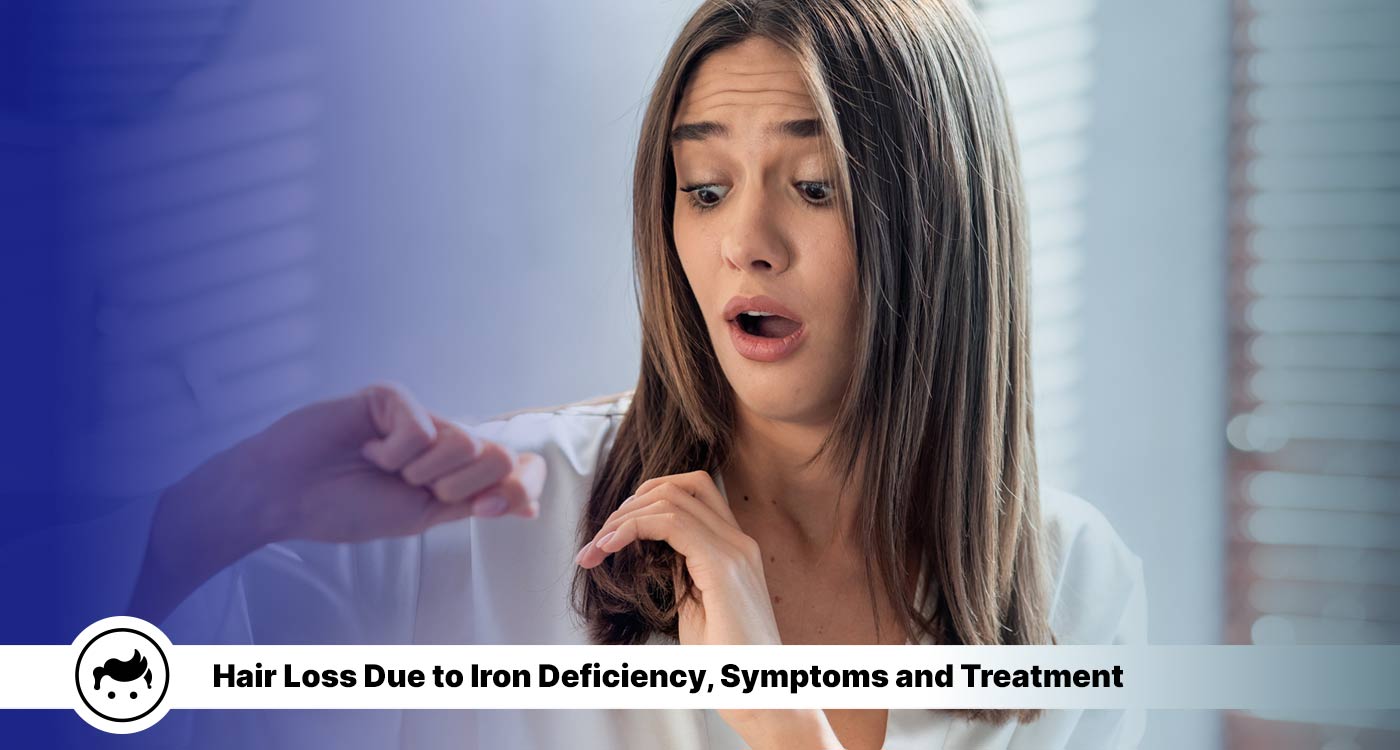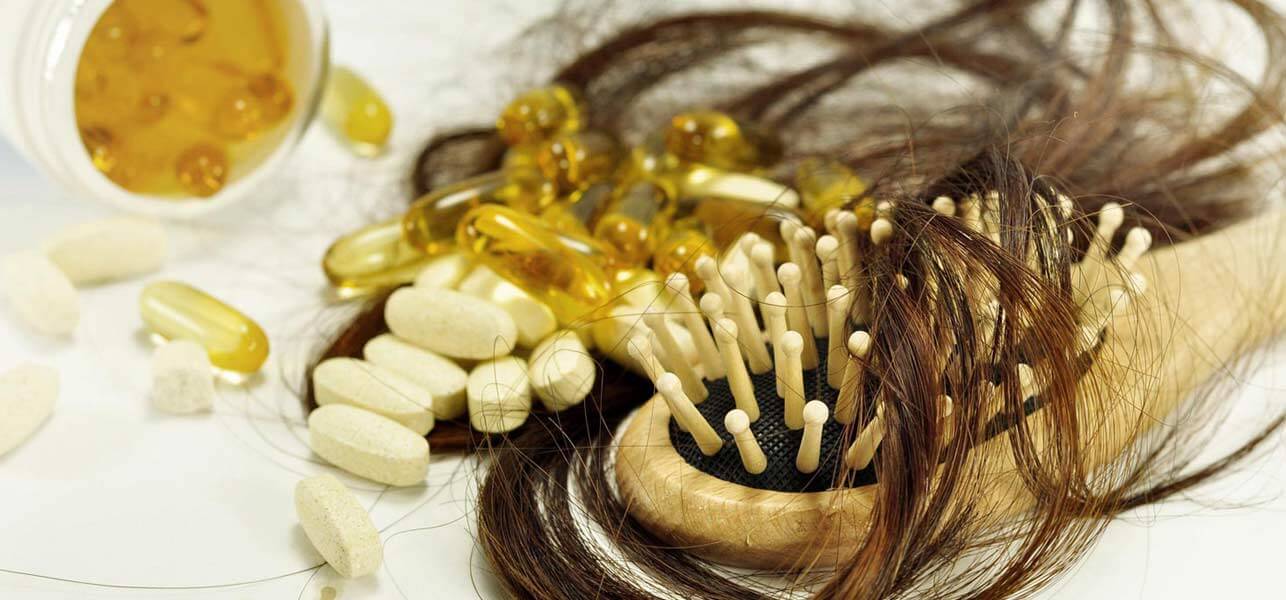Table Of Content

Common symptoms include fatigue, paleness, shortness of breath, and dry or damaged hair and skin. Headaches may be a symptom of iron deficiency, although more research is needed on the connection between dopamine dysfunction, estrogen levels, and iron deficiency. If you pull your lower eyelid down while looking in a mirror, the inside layer should be a vibrant red color. Without enough hemoglobin, less oxygen reaches your tissues and muscles, depriving them of energy.
How long do you need to take iron supplements to see results?
Androgenetic alopecia (AGA), telogen effluvium (TE), and alopecia areata (AA) represent the three most common types of non-scarring alopecia [9]. There are several reasons to suspect a role for micronutrients in non-scarring alopecia. If a doctor encounters a person experiencing hair loss who has low iron and ferritin levels, they will suggest dietary changes that include increased iron levels. There is a significant difference in ferritin levels between women with nonscarring alopecia and healthy women. Iron-deficiency anemia is not more common among women with nonscarring alopecia.
Selenium
The recommended dietary allowance for selenium is 55 μg daily for individuals aged ≥ 14 years in U.S. populations. The availability of selenium in a variety of foods, such as meat, vegetables, and nuts, are sufficient to meet the daily requirement [120]. Selenium ingestion in an amount exceeding 400 μg daily may cause toxicity. Symptoms of acute or chronic selenium toxicity include nausea, vomiting, nail brittleness and discolorations, hair loss, fatigability, irritability, and foul breath odor [120]. An outbreak of selenium toxicity from a liquid dietary supplement that contained 200-fold the labeled concentration of selenium resulted in severe hair loss in most patients [121]. Venton et al. described the loss of pigmentation of the hair in four patients receiving TPN without selenium supplementation.

How can I increase my iron level quickly?
Medical data for patients who had visited our hair clinic from January 2010 to February 2011 and been diagnosed as FPHL or MPHL were obtained. Among them, patients who had more than 6 months of history of hair loss and had not received any kind of treatments for their hair loss were enrolled in the analysis. Patients who had visited for their regular check-up of general health condition and did not suffer from hair loss were selected for a normal control. The database includes diagnosis, physical examination findings, laboratory data, medication lists and medical history. FPHL was diagnosed as central scalp hair loss with or without frontal accentuation with hair miniaturization and no signs of scarring alopecia (14).
The link between vitamin and mineral deficiencies and hair loss
Collagen supplements contain amino acids (the building blocks of protein). They may also contain additional nutrients such as vitamin C, zinc, or biotin. A large body of research has shown that these over-the-counter creams and foams, applied to the scalp daily, are effective at stimulating hair growth, increasing hair density and halting hair loss over time. Male-pattern hair loss is what causes a receding hairline and baldness in men. In women, female-pattern hair loss typically affects the crown or top of the head first, Mirmirani says.
Causes of Iron Deficiency Anemia
20 Best Growth Vitamins For Thinning Hair, Per Dermatologists - Women's Health
20 Best Growth Vitamins For Thinning Hair, Per Dermatologists.
Posted: Fri, 20 Oct 2023 07:00:00 GMT [source]
Gradually thinning hair as you age is also normal, and largely hereditary. But hair loss—especially when it's sudden or at a young age—can also be a sign of certain medical conditions or nutrient deficiencies. If you have iron deficiency anemia, it's usually because you're losing blood or not taking it in from the foods you eat. If supplements don't help with your symptoms or your anemia is severe, you might need a transfusion of red blood cells. Or, if you have an ulcer, tumor, or other growth, it may need to be treated with medicines or surgery. If your kidneys aren't working the right way, they can't make erythropoietin, a hormone made by kidneys that helps with producing red blood cells.
Treating iron deficiency anemia
However, there are some steps you can take to prevent both iron deficiency and any potential hair loss, by ensuring you look after your body and general health. You should always follow the recommended dosage on the packaging when taking iron supplements. Iron is toxic in high doses, so taking an excessive amount can make you ill.
Diet changes
When you’re expecting, you need extra iron to nourish your growing baby as well as provide enough for you and the increase in your blood volume. If you don't get enough iron from your diet or supplements, you can become deficient. Conditions such as celiac disease, ulcerative colitis, or Crohn's disease can make it harder for your intestines to absorb iron from the foods you digest. Surgery such as gastric bypass, which removes part of your intestines, and medicines used to lower stomach acid can also affect your body's ability to absorb iron.
It can result due to one's diet, problems with iron absorption, or a health condition like Crohn's disease. Scientists think this can be due to fatigue, which causes you to be less active. Either way, research shows treating iron deficiency anemia helps to promote weight loss. When you don’t get enough iron, it especially affects your bone marrow. The marrow is where hemoglobin is created, a process that depends on iron.
Spoon-shaped fingernails, also called koilonychia, are another symptom of iron deficiency anemia. People with iron deficiency anemia may have restless legs syndrome, which is a strong urge to move your legs while at rest. Consequently, iron deficiency may worsen conditions that affect your heart, such as heart failure and coronary heart disease. Since tiredness is often considered a part of a busy, modern life, it’s difficult to diagnose an iron deficiency based on this symptom alone. This fatigue happens because your body lacks the iron it needs to make a protein called hemoglobin, which helps carry oxygen around your body.
The serum and hair selenium levels were 38 ± 11 ng/mL and 0.34 ± 0.13 μg/g, respectively. Hair started to re-pigment after 6–12 months of therapy with intravenous selenium [117]. Similar findings, including alopecia with pseudoalbinism, were found in 6 infants receiving nutritional support. In these six infants, after starting daily selenium therapy (5 μg/kg/day), selenium serum levels returned to the normal range of 5–15 μg/dL, and alopecia and pseudoalbinism improved [118]. If doctors find low ferritin levels in a person with hair loss, they may advise them to increase their iron intake to help correct the problem.
After donating blood, you may also be a little low in RBCs for a few days. However, in healthy people who donate blood, RBC volume is usually corrected without noticeable symptoms. Normal or heavy menstrual bleeding can lead to iron deficiency anemia.
There were three cases of uncombable hair syndrome, three cases of brittle nail syndrome, one case of alopecia due to valproic acid intake, and one case of an infant on a biotin-free dietary supplement. All of these 18 patients had underlying causes of biotin deficiency and, once treated with biotin supplement, showed clinical improvement in a variable time period [35]. In most cases, a balanced diet will supply a healthy amount of vitamin A [14].
Your doctor might talk to you about taking supplements if you don’t eat enough iron-rich foods (such as liver and beef). The hemoglobin in red blood cells gives blood its red color, so low levels caused by iron deficiency make the blood less red. That’s why skin can lose some of its color or warmth in people with iron deficiency.
This threshold of 30–41 ng/dL yields sensitivity and specificity rates of 92–98% each for iron deficiency [29]. The prevalence of iron deficiency among women with hair loss increased with this threshold to 59%. It would appear that the prevalence of reduced ferritin levels (below 30–40 ng/dL) is higher among women with diffuse hair loss than among women in the general population. Ferritin levels below 30 ng/dL were found in 40–50% of the women in Denmark and Norway [34], 32% of the women in Portugal [35], and 47% of the women in Cambodia [38]. The most common nutritional deficiency in the world is iron deficiency, which contributes to TE [82, 83]. The serum ferritin (iron-binding protein) level is considered to be a good indicator of total body iron stores and is relied upon as an indicator in hair loss studies [84].
However, it can stem from various medical conditions, including iron deficiency anemia. Addressing your iron deficiency by taking iron supplements can help you to see a level of hair regrowth, life and energy. Low ferritin is like having an empty shelf, and as a result, indicates you have less iron which can be a cause of iron deficiency hair loss.

No comments:
Post a Comment